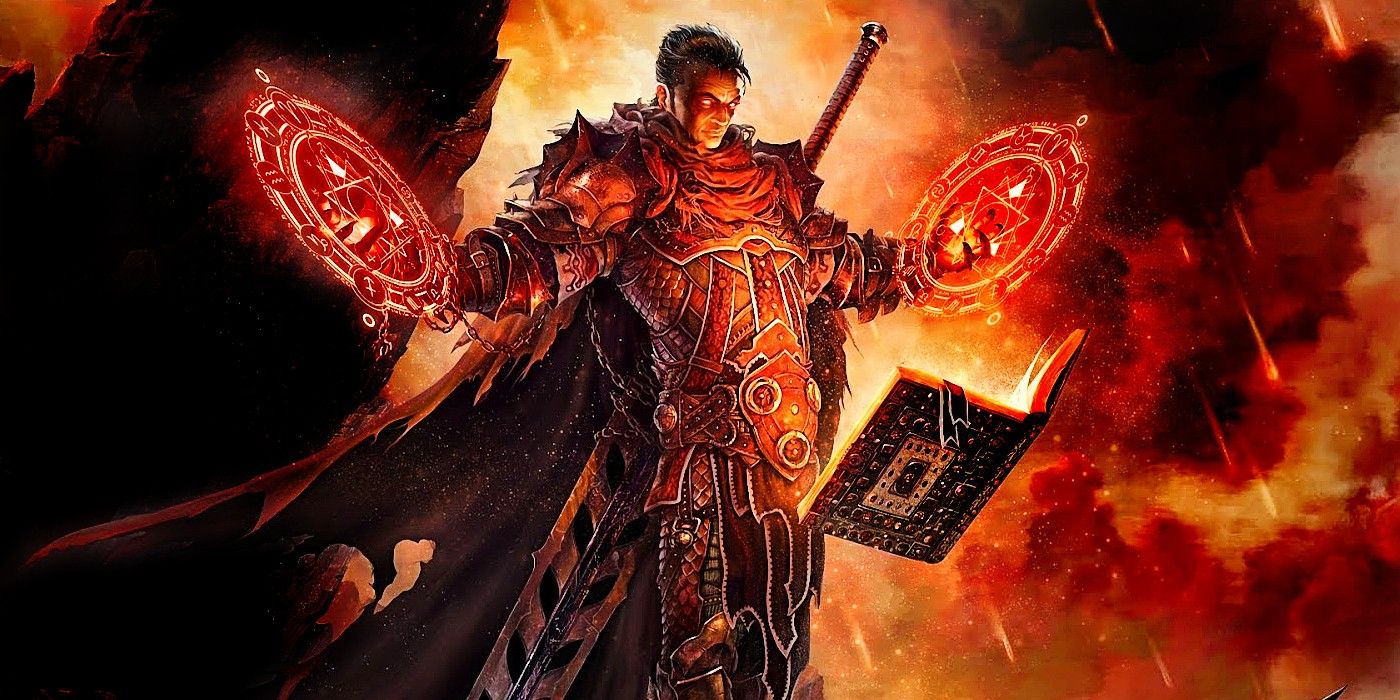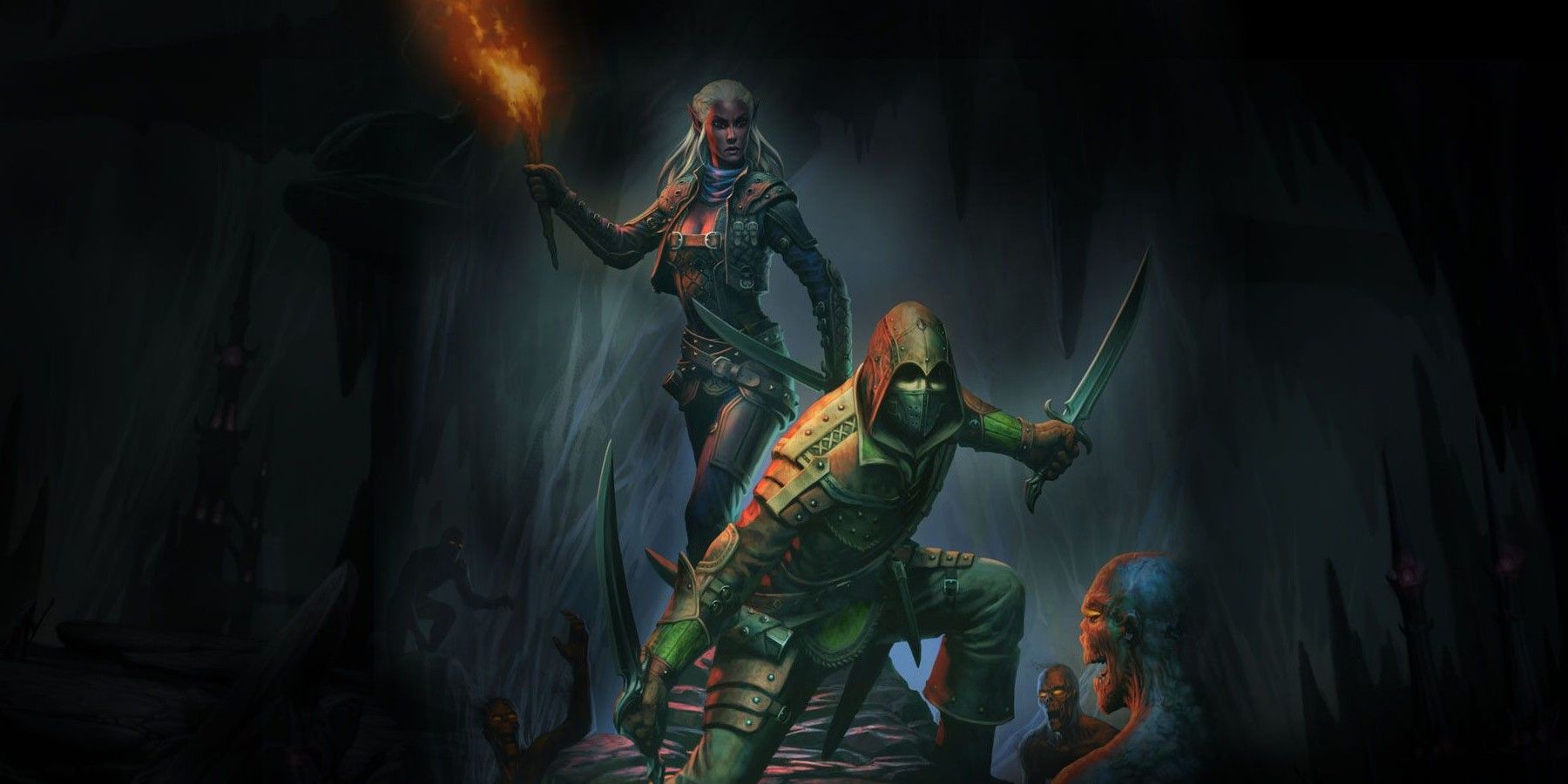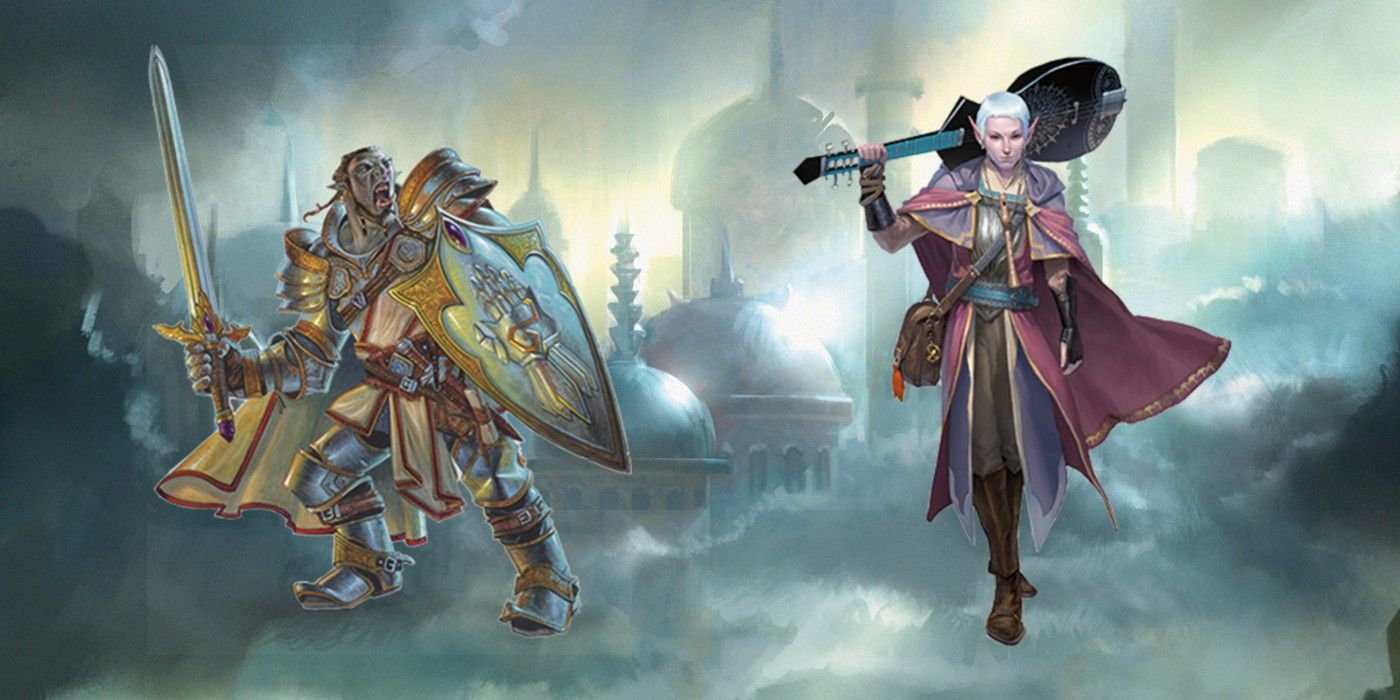Finding the best multiclass combos in Dungeons & Dragons 5e can be difficult when there are so many options available. Deciding between martial or spellcasting, half or full-caster, as well as what makes sense narratively can eat up a lot of time that could be spent rolling dice and slaying monsters. Especially now, players are spoiled for choice with over 120 official subclasses.
Multiclassing may occur for a number of different reasons. A player could want more variety in their roleplay experience or options during combat, or their character could have roleplayed a deal with an eldritch being and be forced to take levels in warlock as a consequence. No matter the reason, multiclassing brings with it its own set of challenges to consider. In some situations, players may want to counter their DMs with tough D&D subclass combos. In order to properly prepare for a multiclass, the player must take into consideration a wide variety of factors and how they might affect their character in both the short and long term.
Multiclassing effectively in 5e D&D takes considering what class abilities synergize well as well as what is lost and gained when choosing to branch off into a different class. A Wizard multiclassing into Cleric must now contend with spells that use another ability to cast (Wisdom as opposed to Intelligence). A Fighter multiclassing into wizard must now contend with adding D&D spells that could break the game to their character. Anyone multiclassing into Warlock must come to grips with its unique take on spells and invocations. The following are some class and subclass combinations that synergize well and can lead to interesting moments both in combat and roleplay.
College Of Swords Bard & Swashbuckler Rogue: Dashing Duelist
Bards are a versatile class overall, so it's easy to imagine that they would fit well with just about any other class. Rogues come with a variety of useful utilities in addition to their stealthy attack advantages. Combining the two means that a character will have access to a wide array of skill proficiencies in addition to the Bard's spellcasting and the Rogue's sneak attacks. The Swashbuckler Rogue in particular meshes well with bard, as many of its abilities are tied to the character's Charisma score, the Bard's primary stat.
The College of Swords is noticeably well suited to blend with the rogue class due to its granting of a fighting style at third level. Blade flourishes and fancy footwork provide excellent positioning control, and rakish audacity ensures that sneak attack damage is always on the table, allowing for clever D&D bard rogues to deal double damage. Either dueling or two-weapon fighting is of great benefit to any Rogue, and at 6th level, the college of swords allows two attacks per turn, something notably absent from the Rogue's suite of abilities. For the most effective division of levels, putting 6 levels into Bard and 14 into Rogue allows one to take advantage of the College of Swords' extra attack while leaving out higher-level Bard class abilities in favor of capitalizing on the Rogue's utility.
Gloomstalker Ranger & Assassin Rogue: Ultimate Ambusher
The Rogue excels at being an invisible D&D enemy and fighting using precision strikes on singular targets. The assassin capitalizes on this by incentivizing getting the first hit in combat through skills that grant advantage on attacks against targets who haven't taken a turn yet. The Gloomstalker Ranger also rewards characters who strike first, granting them the ability to make an additional attack on their first turn in combat as well as adding bonus damage dice to the extra attack. It also helps ensure that the character will strike first by granting a bonus to Initiative.
Similar to the College of Swords above, the ranger class also augments rogues with the ability to pick a fighting style, this time throwing archery and defense into the mix. Favored enemy allows rogues to hone in on a specific type of prey for their sneak attacks, and natural explorer makes traveling to a target through favored terrain simple. For the most effective combination, characters only need three levels in Ranger to pick up the Gloomstalker subclass and relative benefits, and pouring the rest into Assassin still allows for the capstone skill of that subclass. Another thing added with a three-level dip into Ranger is first-level spellcasting, which gives access to the incredibly powerful hunter's mark spell for compounding damage to a single target. This helps keep the usually one-note D&D Assassin subclass from being too underwhelming.
Oath Of Redemption Paladin & College Of Glamour Bard: A Presence On & Off The Battlefield
While Paladins are generally seen as heavily-armored smite machines, they do also have the potential to be incredibly persuasive. After all, Charisma is one of their major abilities. No subclass capitalizes on this better than the Oath of Redemption, which focuses on ending conflict before combat ever breaks out. To be an even greater benefit to their allies both off and on the battlefield, Redemption Paladins can take levels in Bard to access the College of Glamour. This allows the character to take full advantage of their Charisma-based magic, as well as Dungeons & Dragons' tactics and combat system.
Combining abilities like emissary of peace and enthralling performance ensures that the character always has the best chance to succeed on their Charisma checks. When talking fails or if peace is not an option, mantle of inspiration allows the party to position themselves free of interference, while rebuke the violent punishes those who attack the character's allies. Starting in Paladin before multiclassing into Bard means that the character will have full access to weapon and armor proficiencies as well. To make the most of this combination, a mix of six levels in Paladin and fourteen in Bard works because while this does preclude the Paladin's aura of the guardian, it allows the capstone of the College of Glamour, unbreakable majesty, which can wreak havoc on enemies attacking both the character and their allies. This keeps a Paladin from being too weak, and keeps the Bard overpowered.
Finding the best multiclassing combination is equal parts art and science. Synergies should definitely be taken into account, but roleplay opportunities often lead to combinations that many may not usually consider. A Druid may take levels in Barbarian as they become more in tune with their primal side, or a Rogue may forsake their criminal ways and take a Paladin oath. No combination is off the table, and that is one of the best things about Dungeons & Dragons. The above are some of the best combinations available at the moment, but with new subclasses coming in almost every book release, like the new Unearthed Arcana D&D Giant subclasses and feats, the possibilities for multiclassing are truly endless.




